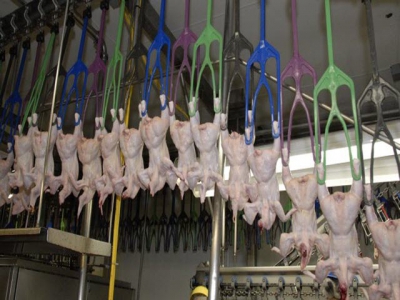Research points to new methods for poultry wastewater treatment

Proof of concept shows value-added products could be recovered after separation utilizing a commercial hydrophobic adsorbent.
The U.S. Poultry & Egg Assn. (USPOULTRY) and the USPOULTRY Foundation announced the completion of a funded research project at the University of Kansas in Lawrence, Kan., that found new methods for poultry wastewater treatment.
In a recently completed research project, Dr. Gibum Kwon at the University of Kansas Center for Research found that innovative new technologies could be applied to the treatment of poultry processing plant wastewater, USPOULTRY said.
Smart membranes were developed to continuously separate oil and water mixtures, and other processes were used to recover value-added products. This technology shows promise for improving poultry wastewater treatment.
Kwon said poultry processing facilities use a large volume of fresh water and produce a large volume of wastewater daily. Current poultry wastewater remediation technologies have a series of consecutive steps, including sedimentation, biological oxidation of organic pollutes using microorganisms and filtration.
However, these processes may require using chemical agents and biological species that must be removed before discharge or may require a long treatment time, resulting in increased operating costs, he wrote in a research summary.
Kwon said the primary goal of this project was to devise an economically viable, highly energy-efficient, continuous, single-unit operation for the remediation of poultry wastewater by uniquely combining smart membrane-based separation, liquid-liquid extraction and recovery of value-added products.
During the project period, specific objectives were addressed, and significant progress was made toward development of the new system. Membranes were developed possessing selective wettability, both hydrophilic (water loving) and oleophobic (oil hating), and photocatalytic ability by coating commercially available filters with photocatalytic titania nanoparticles, Kwon said.
He reported that successful experiments established the proof of concept that value-added products could be recovered after separation utilizing a commercial hydrophobic adsorbent.
The new apparatus has been tested using real wastewater from a poultry processing plant and performed well under laboratory conditions, he noted. However, several aspects must be improved before it can be commercially successful, such as filter cleaning, filter durability and byproduct recovery capacity.
Kwon added that this research is "very important to the future of the poultry industry because innovative new technologies are needed to improve the treatment of poultry wastewater. Such technologies can help the industry enhance its programs to reuse, conserve and recycle water."
Related news
 Poultry farming: The robots are coming
Poultry farming: The robots are coming Predictions are that robots in poultry houses will soon surveil grow-out conditions and perform interactive tasks all around the industry.
 5 ways to improve broiler feed efficiency beyond nutrition
5 ways to improve broiler feed efficiency beyond nutrition After the feed arrives at the farm, there are five pointers that will help improve feed efficiency in broilers.
 Study shows wheat quality’s impact on broiler performance
Study shows wheat quality’s impact on broiler performance U.K. research shows moisture content at harvest and presence of fungus can affect performance of broilers consuming the grain